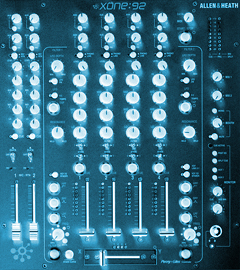| |
Dance music before disco
During the early 1920s a popularized dance form of jazz became popular at nightclubs in major cities. Many parallels exist between the dance music of the 1920s and disco music from the 1970s. Both forms of music featured lavish orchestrations. Both came during period of relative social liberalism (see Roaring Twenties). They both became popularized through black nightclubs although Disco was just as heavily--if not more-- popularized through nightclubs and culture as well. It was during the 1920s that the disco ball first appeared. An example can be seen in the nightclub sequence of Berlin: Die Sinfonie der Großstadt, a German silent film from 1927. The Great Depression led to a religious revival and to a socially conservative period in which nightclubs were shut down and relations between whites and minorities became strained. By 1935, swing music had replaced the dance music that had characterized the night life of the 1920s. (Another conservative movement would lead to the demise of disco late in 1979.)
|
|
Disco is a genre of dance-oriented pop music. Disco songs usually have soaring, often reverberated vocals over a steady four-on-the-floor beat, an eighth note (quaver) or sixteenth note (semi-quaver) hi-hat pattern with an open hi-hat on the off-beat, and a prominent, syncopated electric bass line. Strings, horns, electric pianos, and electric guitars create a lush background sound. Orchestral instruments such as the flute are often used for solo melodies, and unlike in rock, lead guitar is rarely used. 
|
|
Role of producers and DJs
Disco has its musical roots in late 1960s soul, especially the Philly and New York soul, both of which were evolutions of the Motown sound. The Philly Sound is typified by lavish percussion, which became a prominent part of mid-1970s disco songs. Music with proto-"disco" elements appeared in the late 1960s, with "Tighten Up" and "Mony, Mony," "Dance to the Music," "Love Child" . Two early songs with disco elements include Jerry Butler’s 1969 "Only the Strong Survive" and Manu Dibango's 1972 "Soul Makossa" . The term disco was first used in print in an article by Vince Aletti in the September 13, 1973 edition of Rolling Stone Magazine titled "Discotheque Rock '72: Paaaaarty!"
The early "disco" sound was largely an urban American phenomenon with such legendary producers and labels such as SalSoul Records (Ken, Joe and Stanley Cayre), Westend Records (Mel Cheren), Casablanca (Neil Bogart) and Prelude (Marvin Schlachter) to name a few, inspiring and influencing such prolific European dance track producers such as Giorgio Moroder and Jean-Marc Cerrone. Moroder was the Italian producer, keyboardist, and composer who produced many songs of the singer Donna Summer. These included the 1975 hit "Love to Love You Baby", a 17 minute-long song with "shimmering sound and sensual attitude". Allmusic.com calls Moroder "one of the principal architects of the disco sound".[2] |
|